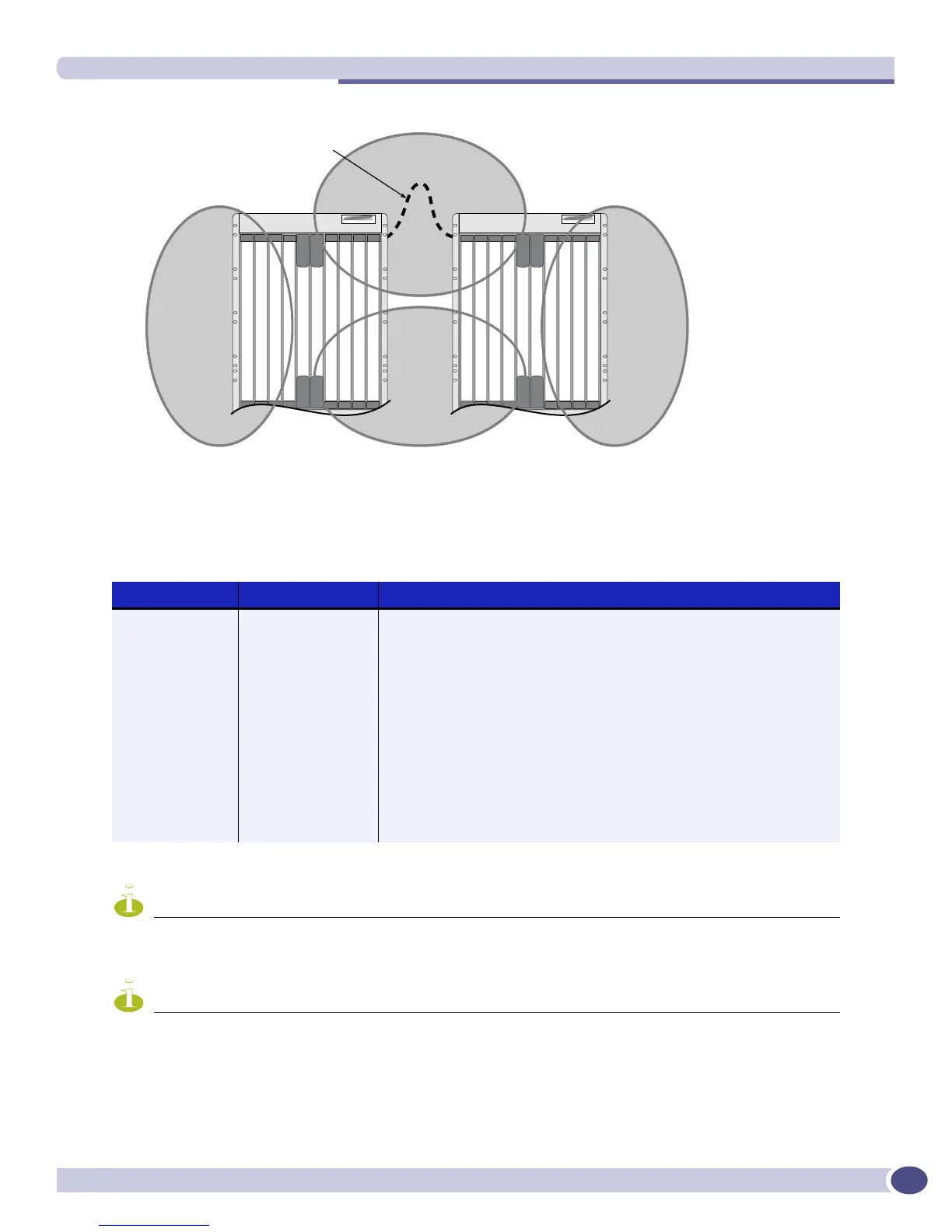Overview of OSPF
ExtremeWare XOS 11.3 Concepts Guide
549
Figure 69: Virtual link providing redundancy
Point-to-Point Support
You can manually configure the OSPF link type for a VLAN. Table 68 describes the link types.
NOTE
The number of routers in an OSPF point-to-point link is determined per VLAN, not per link.
NOTE
All routers in the VLAN must have the same OSPF link type. If there is a mismatch, OSPF attempts to operate, but
it may not be reliable.
Table 68: OSPF link types
Link Type Number of Routers Description
Auto Varies ExtremeWare XOS automatically determines the OSPF link type based
on the interface type. This is the default setting.
Broadcast Any Routers must elect a designated router (DR) and a backup designated
router (BDR) during synchronization. Ethernet is an example of a
broadcast link.
Point-to-point Up to 2 This type synchronizes faster than a broadcast link because routers do
not elect a DR or BDR. It does not operate with more than two routers
on the same VLAN. The Point-to-Point Protocol (PPP) is an example of
a point-to-point link. An OSPF point-to-point link supports only zero to
two OSPF routers and does not elect a designated router (DR) or
backup designated router (BDR). If you have three or more routers on
the VLAN, OSPF fails to synchronize if the neighbor is not configured.
Passive A passive link does not send or receive OSPF packets.
ABR 1 ABR 2
EX_045
Area 2
Area 0
Area 1 Area 3
Virtual link

